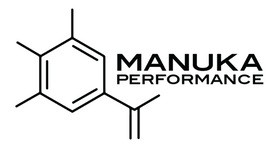Read any research article about honey and the opening sentences are typically “Honey has been used for thousands of years for its medicinal properties”. This isn’t because writers are uninventive, it is because honey has in fact been used by many cultures to treat wounds and diseases for thousands of years Research examining the health properties of honey has increased over the last few years, and honey is now moving away from an ‘alternative’ therapy to a scientifically supported food product with potential pharmaceutical properties.
Honey contains carbohydrates, minerals, proteins, fatty acids, and bioactive phenolic and flavonoid phytochemicals. Flavonoids and phenolics are secondary metabolites of plants and plant products that have antioxidant and anti-inflammatory effects, protect cardiovascular health, and promote healthy immune function. Mānuka honey contains unique components that other honey does not, which increases its antibacterial, antioxidant and anti-inflammatory properties, and is why mānuka honey has been studied in detail for its medicinal properties.
Mānuka honey is produced by bees who dine on the flowers of the mānuka tree. Mānuka (Leptospermum scoparium) is a New Zealand native tree and considered Taonga (sacred treasure) by Māori. Parts of the mānuka tree have been used in traditional medicine (rongoā) for millennia, but it is the flowers of the mānuka tree that gives mānuka honey its unique chemical composition. The flowers of the mānuka tree undergo photosynthesis which produces a unique nectar that contains high levels of dihydroxyacetone (DHA) and a compound called Leptosperin. The DHA gets converted to methylglyoxal (MGO), and it is the MGO levels that make mānuka honey special.
MGO is responsible for mānuka honey’s strong antibacterial properties, and the higher the MGO concentration, the higher the antibacterial activity. Mānuka honey contains varying concentrations of MGO which are caused by the differences in the geographical location of the mānuka trees, climate, and environmental conditions, and harvesting year. The Unique Mānuka Factor (UMF) is a value that reflects the MGO content of mānuka honey. The higher the UMF, the higher the MGO, and therefore the higher the potency of the bioactive MGO and other bioactive compounds (leptosperin and DHA) in the mānuka honey. Leptosperin can only be found in mānuka flower nectar and cannot be created artificially – nature must produce it. Like the MGO, Leptosperin has health promoting properties, but as an anti-inflammatory rather than an anti-bacterial, adding to mānuka honey’s unique properties.
The medicinal properties of mānuka honey are being tested in clinical settings, and antioxidant, antimicrobial, antibacterial, and wound healing benefits have been reported. This is attributed to the concentrations of MGO in the honey, and the UMF is an important factor in determining a mānuka honey’s antibacterial activity. Mānuka honey is therefore more than a delicious, dark, distinct, and delicious honey; it is a food rich in nutrients and bioactive molecules that assist health, promote wound healing, and has anti-inflammatory properties – and all from a natural food source.
* For more information on UMF ratings refer to The UMF™ Quality Assurance System - UMF
References
El-Senduny, Fardous F., et al. "Manuka honey, a unique mono-floral honey. A comprehensive review of its bioactives, metabolism, action mechanisms, and therapeutic merits." Food Bioscience 42 (2021): 101038.
Johnston, Matthew, et al. "Antibacterial activity of Manuka honey and its components: An overview." AIMS microbiology 4.4 (2018): 655.
Schmidt, Carolin, Kristin Eichelberger, and Harald Rohm. "New Zealand mānuka honey-A review on specific properties and possibilities to distinguish mānuka from kānuka honey." LWT 136 (2021): 110311.
Tungmunnithum, Duangjai, et al. "Flavonoids and other phenolic compounds from medicinal plants for pharmaceutical and medical aspects: An overview." Medicines 5.3 (2018): 93.
Wallace, Alison, et al. "Demonstrating the safety of manuka honey UMF® 20+ in a human clinical trial with healthy individuals." British journal of nutrition 103.7 (2010): 1023-1028.

